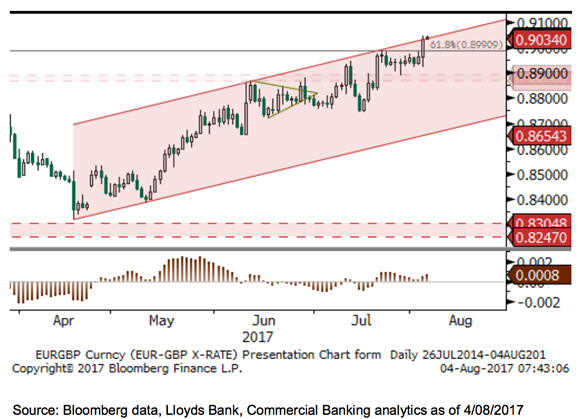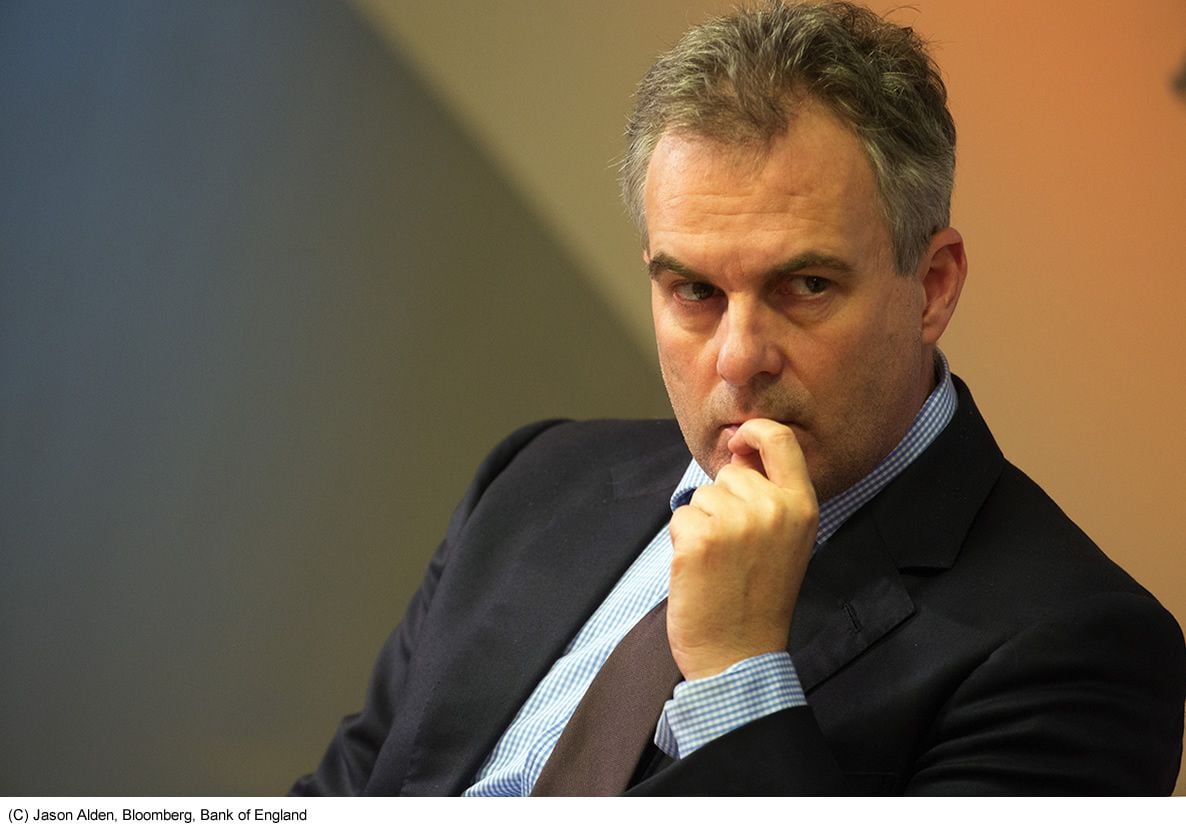Euro to Pound Exchange Rate Shifts Into Bullish Mode

The Euro looks to have shifted up a gear in it’s long-term rally against the British Pound.
However, analysts will be watching coming sessions for confirmation as to whether we are seeing the start of a genuine break-out, or a false break higher in which case Sterling is able to retrace some of the ground lost over recent hours.
If we look at the Euro to Pound charts, we note a two-week range we have been in between 0.8895 and 0.8990. (For the Pound to Euro 'translation', please scroll down).

Thursday saw the range give way to new highs, extending the trend that started in April.
EUR/GBP broke the £0.90 ‘handle’ on a broad-based sell-off in Sterling as the Bank of England opted to keep interest rates unchanged and downgraded economic forecasts in its latest inflation report.
According to technical analyst Robin Wilkin at Lloyds Bank, momentum studies have turned back into bull mode, with the next key area of resistance not seen until the 0.9175 region.
“In this regard, intra-day support lies at 0.8980-0.8950,” says Wilkin. “A move back through there suggests we have seen a false upside break, while a decline back below 0.8870 is needed to suggest a trend reversal.”
Long-term, it is still unclear to Wilkin whether the decline from the “flash crash” highs at 0.9710 are just corrective, for an eventual re-test of the 2008 highs at 0.9802, or a major lower high for a move back towards 0.7500-0.7000 range lows.
“We have been highlighting 0.8250 as key support in determining this outcome,” says the analyst.
Is the fall in value of Sterling impacting your international payments? Get up to 5% more foreign exchange by using a specialist provider by getting closer to the real market rate and avoid the gaping spreads charged by your bank for international payments. Learn more here.
Translation for those Watching Pound to Euro Conversion
Technical analysis of the kind detailed here is typically done from the EUR/GBP angle; but it can be quite confusing for those looking to buy Euros with Sterling.
So, using the above, here is the GBP/EUR translation.
The two-week range in GBP/EUR lies between 1.1242 and 1.1123.
On Thursday GBP/EUR broke below support at 1.11 which suggests that Sterling is at risk of a deeper decline with the next layer of support in the market identified by Wilkin at 1.0899.
Intra-day resistance that will likely weigh on any Sterling comeback lies at 1.1136-1.1173; so the currency pair must move back above here to suggest the Euro's break-out was false.
The Pound's recovery from “flash crash” lows at 1.0298 since October 2018 might have been corrective, in which case the GBP/EUR exchange rate might actually still be on course for another test of the 2008 lows at 1.0202.
If the October low is the low for the cycle then Sterling might actually be on course for a long-term recovery for 1.33-1.4285. Based on prevailing evidence, I would suggest the former is more accurate.
Broadbent's Positive Message

Downside in Sterling does however appear to be tampered to some extent by the message from the Bank that 2018 might see more than one interest rate rise.
The message was hammered home by the Bank's Deputy Ben Broadbent who told the BBC there was a "trade off between stabilising inflation and keeping the economy going".
But he said the UK was "a little bit" better placed to cope with an interest rate rise.
Broadbent said the Bank's Monetary Policy Committee (MPC) believed there would need to be more rate rises than those expected by the financial markets.
"The MPC said given the other assumptions in its forecast it thought probably there would need to be rate rises, and indeed more rate rises than those priced into the interest rate curve in future than the financial markets expect. "I do think the time is likely to come when rates will go up generally."
Could there be a chance that this view is given more of an airing by FX markets? If so then we would suggest the downside in GBP might be protected going forward.
But again, it all ultimately comes down to Brexit.
Ireland’s Varadkar Suggested Free Trade Deal an Option
The UK could enter into a “deep” free trade agreement with the EU if Britain leaves the single-market on Brexit argues Ireland’s prime minister in one of the more constructive developments coming out of the Brexit debate of late.
Leo Varadkar proposed that Britain and Ireland could have a transition period during which the UK negotiated a new trade deal with Europe.
Varadkar stressed that there was still “common ground” between the Dublin government, London and Northern Irish parties on the issue of the post-Brexit border.
Speaking at Queen’s University Belfast, Varadkar said: “For example if the United Kingdom does not want to stay in the customs union, perhaps there can be a EU-UK customs union. After all, we have one with Turkey. Surely we can have one with the United Kingdom?”
“If the UK does not want to stay in the single market, perhaps it could enter into a deep free trade agreement with the EU and rejoin Efta, of which it was a member prior to accession. And if this cannot be agreed now, then perhaps we have a transition period during which the UK stays in the single market and customs union while things are worked out.”
“If the UK does not want to stay in the single market, perhaps it could enter into a deep free trade agreement with the EU and rejoin Efta, of which it was a member prior to accession. And if this cannot be agreed now, then perhaps we have a transition period during which the UK stays in the single market and customs union while things are worked out.”




